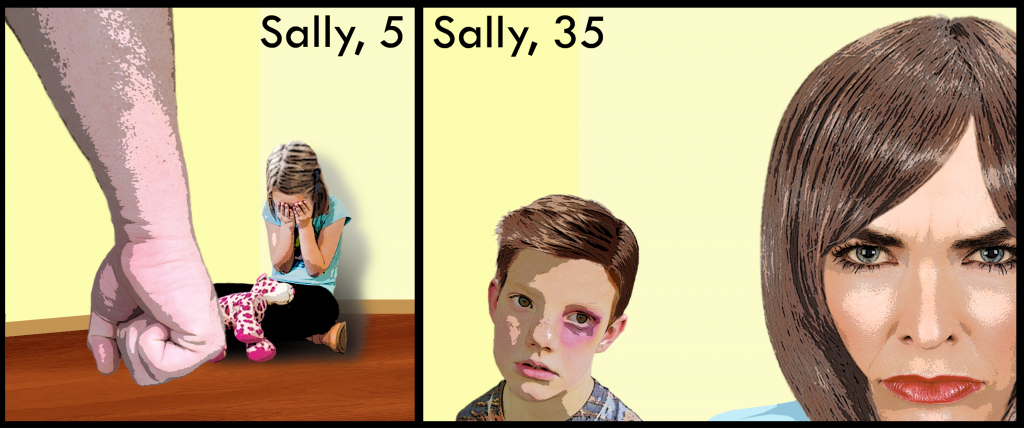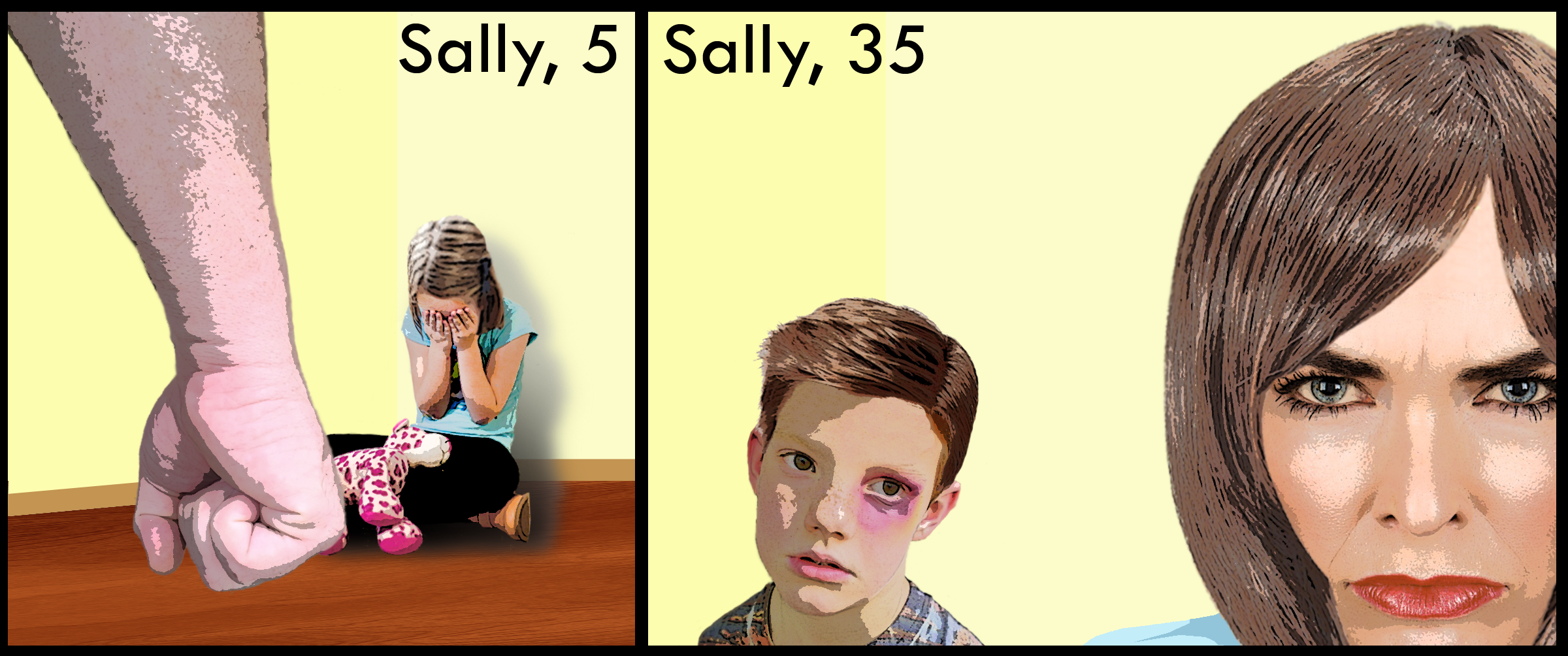Domestic violence: Breaking the cycle of abuse

Why do people abuse other people?
This question has multiple answers, but statistics show that most abusers learn from their parents. Incurring abuse or seeing one parent abusing the other has high consequences on children as they develop.
There are millions of people who witness and/or incur domestic violence every day. Every minute, 20 people are victims of domestic violence. In the U.S., a woman is beaten every nine seconds. 70 percent of women will experience physical and/or sexual abuse by an intimate partner during their lifetime.
Those who suffered in an abusive household should find domestic violence even more reprehensible than the average man or woman. How could they turn around and allow this to happen, or do this, to their own family? Yet, they do. It’s a vicious cycle and needs to be stopped.
Growing up in a violent home impacts the health of a child at as early of an age as in the womb. It is very difficult to treat or help children heal from such exposure.
Sadly, abuse becomes a normal condition of life for them, which often turns into a long cycle of continued abuse throughout their lives. Sometimes the children become the abuser in their adult years, and other times the children grow up to find themselves in a relationship with an abuser.
Statistics show that more than 3 million children witness domestic violence in their homes every year. These children face high rates of depression, sleep disturbances, anxiety, flashbacks, blame and other emotional distress.
Boys who witness domestic violence in their own home are three times more likely to become batterers. They may channel their feelings through aggressive and high-risk acts such as fighting, hitting their siblings, drug abuse and even joining gangs.
Girls may act out in aggressive ways by becoming sexually promiscuous, using drugs and/or causing injury to themselves, as well as ending up in a violent partnership.
Children who are living with the stress and anxiety of their parents hurting each other verbally and/or physically often have a difficult time reading the signals or signs of others’ negative emotions accurately.
Children who are exposed to domestic violence in their homes carry a constant burden with them wherever they go, including school. For instance, if they’re walking through the hall at school and another child bumps into them, they may respond in an aggressive way.
No one is born abusive; it is learned. Bullies at school are frequently the ones who start out as victims themselves. Psychologists say the brains of children raised in violent families resemble the brains of soldiers exposed to combat.
Children don’t have the intellect to comprehend why their parents abuse each other, nor do they have the emotional stability to correctly deal with these feelings, which is why they are usually more aggressive toward other children in their early years.
Abuse affects children’s brains as they grow up, usually leaving them to become adults with high levels of aggression and behavioral problems.
Research has shown that adverse childhood experiences are directly associated with negative outcomes as adults. Abused children have greater risk of homelessness, unemployment, poverty and chronic health problems and mental disorders.
Children who are abused and incur trauma by a caretaker or parent, are damaged significantly in terms of cognitive development.
Research shows that because children’s brains are not yet fully formed and they are in continual development, when a child experiences trauma, certain parts of the brain are inhibited from developing.
What these children need most, rather than just being put on medications, is the opportunity to be provided care that will stimulate the natural healing mechanisms, which are built into all of us.
Children who have endured trauma by their caretakers need more than anything basic human interaction, human communication and a supportive environment to access their creative communicative abilities.
Domestic violence is a learned behavior. Witnessing this trauma has lasting consequences for children and, unfortunately, this behavior is seen generation after generation because they learn in their families as children that it’s okay to verbally and physically abusive to one another and to be destructive.
Children have one shot at childhood. The types of things they live through as a child has an enormous impact on their adult life.
Stopping the vicious cycle of domestic violence can be very difficult, and the first step is often the hardest.
Women, men, teens and children of all race, ethnicity, religion, economic status and gender are affected by domestic violence.
Not every child who is raised in an abusive household grows up to be the abuser and/or ends up in an abusive relationship, but the percentages are too high for the children that do end up this way.
Seeking help and becoming aware of the pattern will help decrease the statistics and might even save lives.
To get more information on domestic violence and how to stop the cycle, visit:
National Coalition Against Domestic Violence, Future Without Violence, The National Domestic Violence Hotline and Domestic Violence and Abuse Help Guide.

